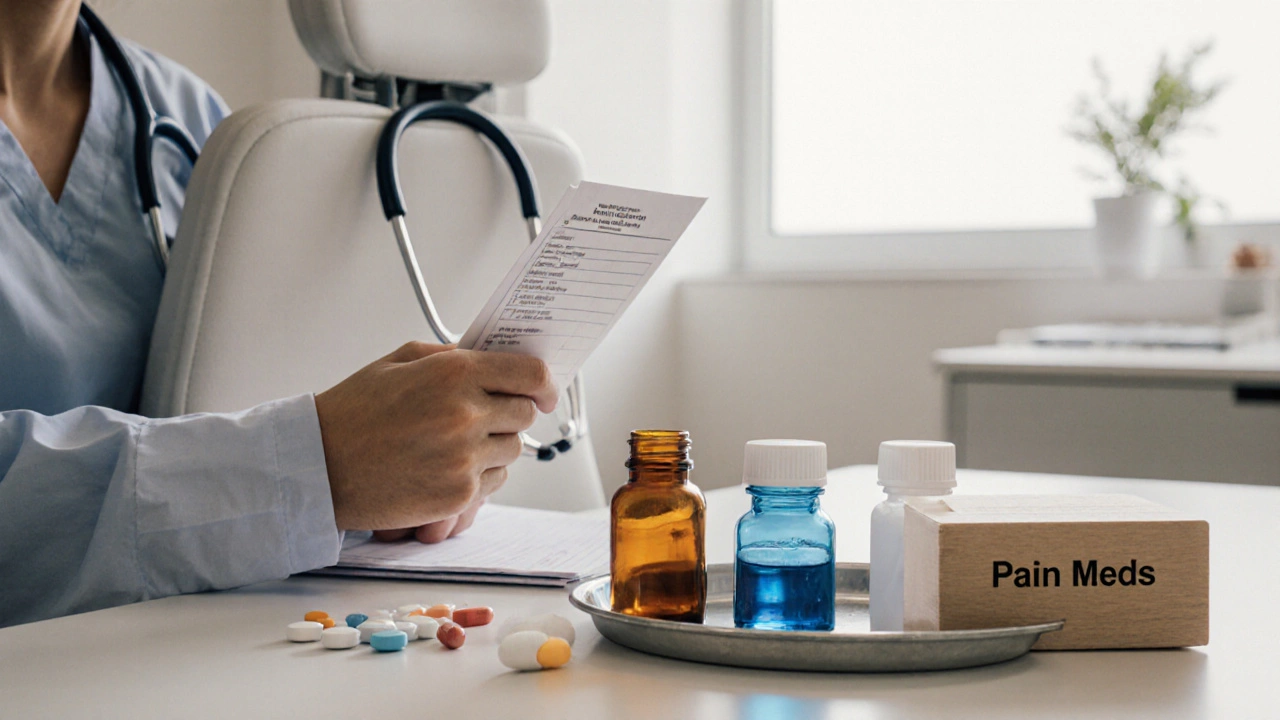Opioid Alternatives: Practical Ways to Manage Pain Without Opioids
Feeling stuck because you need strong pain relief but want to avoid opioids? You’re not alone. Many people look for safer options that still give real comfort. Below you’ll find the most common medicines, therapies, and lifestyle tweaks that work for everyday aches and post‑surgery pain.
Common Non‑Opioid Medications
First up, the drugs you can pick up at a pharmacy or get prescribed without the high‑risk label. NSAIDs like ibuprofen or naproxen cut inflammation and pain, and they’re cheap enough to keep a bottle at home. For moderate pain, acetaminophen works well, especially when taken with an NSAID for a stronger effect.
If inflammation isn’t the main issue, doctors often turn to muscle relaxants such as cyclobenzaprine. They’re useful for back spasms or neck stiffness. Antidepressants like duloxetine don’t just lift mood – they also help with chronic nerve pain. Another class, anticonvulsants (gabapentin, pregabalin), targets nerve‑related discomfort and can be a game‑changer for conditions like sciatica.
Topical solutions are easy to apply and stay local. Creams or patches with lidocaine, capsaicin, or diclofenac give quick relief for joint or muscle pain without affecting the whole body. Because they don’t enter the bloodstream in large amounts, side‑effects are minimal.
Non‑Drug Strategies for Pain Relief
Medicine isn’t the only answer. Physical therapy often tops the list for people who want to move better and feel less pain. A therapist can teach you stretches, strengthening moves, and posture tricks that reduce strain on sore spots.
Exercise, even low‑impact activities like walking, swimming, or yoga, releases endorphins – the body’s natural painkillers. Aim for 30 minutes a day, and you’ll notice a calmer pain level and better mood.
Heat and cold are cheap, fast tools. Apply a warm pack for tight muscles, or a cold pack to numb acute inflammation. Switch between them if you’re unsure which works best for you.
Mind‑body techniques such as deep breathing, meditation, or guided imagery help the brain interpret pain signals differently. Spending just ten minutes a day on these practices can lower the feeling of pain and reduce the need for pills.
Sleep matters, too. Poor sleep makes pain feel worse, while a solid night’s rest lets the body repair itself. Keep the bedroom cool, dark, and free of screens to improve sleep quality.
Lastly, don’t overlook diet. Foods rich in omega‑3 fatty acids (fish, walnuts, flaxseed) fight inflammation, while cutting back on sugar and processed snacks can reduce overall pain levels.
Putting it all together, a mix of over‑the‑counter meds, prescribed alternatives, and lifestyle habits can keep you comfortable without reaching for opioids. Talk to your doctor about which combination fits your health story, and start testing one change at a time. You’ll likely find that many pain sources become manageable, and the fear of dependency fades away.
Common Pain Medications Doctors Prescribe: An Overview
Discover the most common pain medications doctors prescribe, when they choose each type, key side‑effects, and how non‑drug therapies fit into treatment.
Most Powerful Pain Relief: The Best Ways to Soothe Intense Pain Fast
Explore the most powerful pain relief options, from medical treatments to practical tips. Find out what actually works when pain gets too intense to handle.


